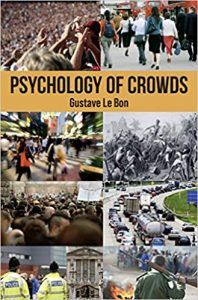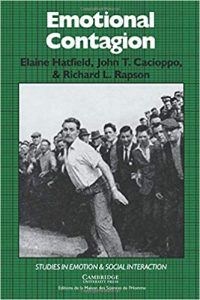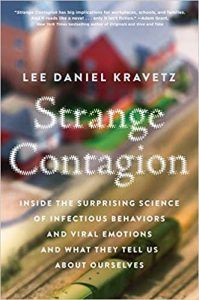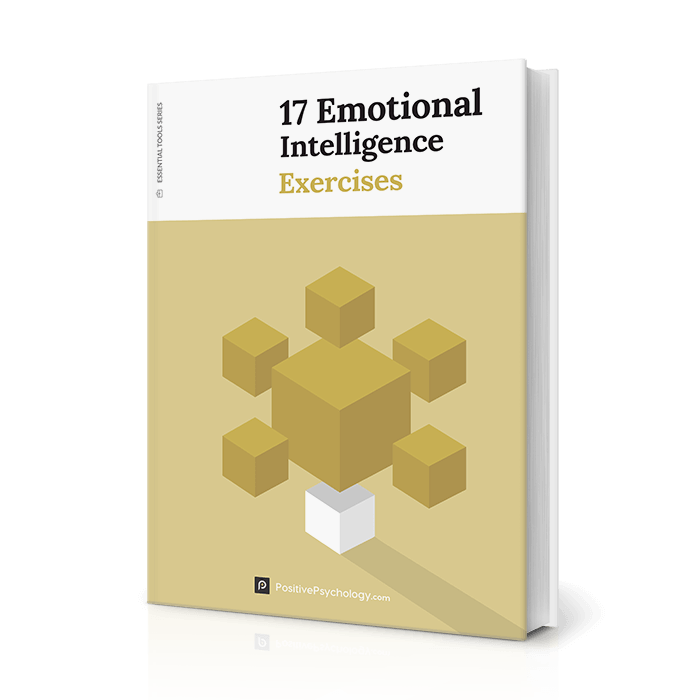What Is Emotional Contagion Theory? (Definition & Examples)
 You come home from a hard day at work, feeling tired and down.
You come home from a hard day at work, feeling tired and down.
Opening the front door, you are hit with the sights, sounds, and aromas of a dinner party in progress.
You see family and friends smiling, laughing, sharing stories and food. Right away, your mood brightens. You forget your troubles and are soon smiling and laughing with the rest.
You’ve just experienced a form of emotional contagion.
Emotional contagion occurs when someone’s emotions and related behaviors lead to similar emotions and behaviors in others.
Awareness of emotional contagion is important for managing our own emotions and related actions, and to assure our wellbeing and that of others.
This article describes the processes involved in emotional contagion. It also discusses how this common and powerful phenomenon might be positively channeled.
Before you continue, we thought you might like to download our three Emotional Intelligence Exercises for free. These science-based exercises will not only enhance your ability to understand and work with your emotions, but will also give you the tools to foster the emotional intelligence of your clients, students, or employees.
This Article Contains:
- What Is Emotional Contagion?
- Behind the Theory: 6 Research Findings
- 3 Real-Life Examples of Emotional Contagion
- Emotional Contagion and Empathy
- A Note on Emotional Contagion in the Workplace
- The Powerful Role of Social Media in Contagion
- 4 Interesting Books on the Topic
- Our Favorite TED Talks
- PositivePsychology.com’s Relevant Resources
- A Take-Home Message
- References
What Is Emotional Contagion?
If someone approaches us with a smile, we have a natural tendency to smile back. If they approach us with a frown, the tendency is to frown too.
Such mimicry of smiles, frowns, or other emotional expressions often happens within milliseconds and without our being fully conscious of it (Wood, Rychlowska, Korb, & Niedenthal, 2016). By mimicking others’ facial expressions, we can tap into how they are feeling and experience similar emotions ourselves. We are then susceptible to behaving one way or another, based on these emotions.
Such emotional contagion can be negative or positive.
When people are stirred to anger and violent acts by a demagogue, that would be an example of negative emotional contagion.
On the other hand, when a corporate leader frequently smiles, is generally kind and positive toward employees, and inspires positive feelings throughout the workforce, this would be an example of positive emotional contagion.
Behind the Theory: 6 Research Findings

Research has found that such mimicry comes naturally to humans and other social creatures based partly on the existence of “mirror neurons” in our cerebral cortex (Bastiaansen, Thioux, & Keysers, 2009).
Mirror neurons were first discovered in the 1990s. Italian neuroscientists showed that the same neurons in monkey brains fired when a monkey grabbed an object as when they watched another monkey grab the object (Ferrari & Rizzolatti, 2014).
Similar mirroring processes occur between humans. When you sit by yourself and smile about some pleasant experience, this kindles certain neurons in your brain. When another person smiles at you, this kindles many of the same neurons that fired when you smiled on your own (Bastiaansen et al., 2009).
These specialized neurons and their networks help explain how humans can “mirror” each other, including our emotions. [Reviewers update: mirror neurons in humans are not well understood, and it is not known the extent to which they play a role in replicating emotions.]
Neurons and their pathways strengthen the more they are activated. We know this as Hebbian learning, which has been defined as: neurons that fire together, wire together (Keysers & Gazzola, 2014).
Mirroring – and spreading – positive or negative emotions has real-world implications. For example, a study in Accident Analysis and Prevention found that negative emotional contagion such as anger in the workplace led to more cognitive errors and workplace accidents. Positive emotional contagion led to fewer cognitive errors and accidents (Petitta, Probst, Ghezzi, & Barbaranelli, 2019).
There is evidence that taking breaks from social media can increase positive affect, possibly through less social comparison and exposure to negativity, plus more emphasis on physical versus sedentary activity.
For example, Hunt and colleagues (2018) found that students who limited their use of Facebook, Instagram, and/or Snapchat to 30 minutes per day for three weeks experienced significant reductions in loneliness and depressive symptoms, compared to students who used social media as usual during that period.
They concluded that limiting social media use to 30 minutes per day can contribute to greater emotional wellbeing (Hunt, Young, Marx, & Lipson, 2018).
3 Real-Life Examples of Emotional Contagion
There are many examples of negative emotional contagion throughout history, especially involving crowds.
Gustav Le Bon’s Psychology of Crowds (1895), an early work highlighting emotional contagion, was inspired in part by the author’s experience of the Paris Commune (March–May 1871). The Paris Commune was a short-lived, violent revolutionary movement that pitted Parisians against French in rural areas.
In Le Bon’s view, the Commune was primarily an instance of mob rule, characterized by crowds wherein a contagion of violent ideas and feelings led to riots, bloodshed, and burning of architectural landmarks.
By the time Le Bon wrote Psychology of Crowds, the existence of microbes and their potential for contagious spread was well established in scientific circles. Le Bon confidently asserted that a similar close-contact spread of emotions – emotional contagion – could be just as powerful and consequential as any microbial contagion.
Later thinkers noted that microbial contagion differs from emotional contagion as it is “linear,” with the infectious agent passively received by an individual. While emotional contagion is said to be “dialogic,” because it involves an active subject taking part with others in a sort of dialogue of shared gestures, facial expressions, symbols, or speech; individuals are co-creating the emotional experience or contagion (Warren & Power, 2015).
In another well-known example of emotional contagion, false accusations against African-American men at a circus in Duluth, Minnesota, in 1920 resulted in an angry crowd of thousands beating and hanging three of the accused. This incident was later recounted in Bob Dylan’s (1965) epic song Desolation Row. It again illustrates the terrible power of contagion, when the emotions spread are negative and violent.
Instances of positive emotional contagion are also found throughout history, though they might gain less attention.
The 1967 “Summer of Love” in the United States was characterized by large gatherings of mostly young people in San Francisco and other urban areas. These gatherings were known for spreading feelings of generosity, “peace and love,” and general caring for one another. Such feelings and attitudes were reportedly modeled by group leaders like artist Michael Bowen and psychologist Timothy Leary.
Emotional Contagion and Empathy

Empathy, as an attunement to others’ circumstances or moods, involves what Erich Fromm (1956) would call individuation or autonomy. According to Fromm, to be empathic, one needs to walk in another’s shoes, feel their predicament or situation, but also keep the autonomy needed to relate to and potentially help that other person.
Thus, emotional states like empathy require some psychological distance on the part of the person experiencing them – a psychological distance that is often lacking in emotional contagion.
There can be a fine line between empathy and emotional contagion. For example, there are cases of therapists or other helping professionals feeling their clients’ distress so acutely that they become emotionally distressed themselves and can no longer function as helpers.
Such negative emotional contagion might partly explain why a review of the literature on burnout among psychotherapists found “emotional exhaustion” as the most commonly cited cause (McCormack, MacIntyre, O’Shea, Herring, & Campbell, 2018).
A Note on Emotional Contagion in the Workplace
In an informative and inspiring TED talk from 2016, Brandon Smith discusses negative and positive emotional contagion in the workplace.
In the TED talk, Brandon discusses the work of Hatfield, Cacioppo, and Rapson (1994) on mimicry as the basis for often unconscious emotional contagion. He asserts that leaders in organizations spread emotions more powerfully than those under them.
Brandon adds that negative emotions are most contagious and that the antidote – spreading positive emotional states – is imperative for the health of organizations and their members.
The following is prescribed for personal and organizational health:
- Notice how you feel about your workplace, your boss, and your coworkers. This will allow you to make behavioral adjustments. Such adjustments might go from minor adjustments such as avoiding working with certain folks, if possible, to major changes such as resigning to look for a better work environment.
- Decide to be a “positive emotional booster” for others at work. This means offering at least three positives (in the form of smiles, positive feedback, congratulations, etc.) for every one negative you put out, whether it be criticism, a frown, etc. As research has shown, such positivity can be contagious and make your workplace a better and even safer place for all (Petitta et al., 2019).
- Lastly, while not necessarily related to the workplace directly, Smith suggest: When you go out to dinner next time, smile at the server and say “Thank you.” Because odds are, that person has had a rough day.
The Powerful Role of Social Media in Contagion

In a large scale study of 689,003 subjects, they found that reductions in positive newsfeed items were associated with fewer positive and more negative posts by participants. The opposite pattern occurred when negative newsfeed items were reduced.
Kramer et al.’s (2014) study is controversial, due in part to its use of subjects’ Facebook data without informed consent. Still, the basic findings appear sound. These findings suggest emotional contagion can occur across social media platforms and in fact on a massive scale.
Another study (Guadagno, Rempala, Murphy, & Okdie, 2013) suggests that internet videos are widely shared or “go viral” based on the intensity of the emotional response they elicit, regardless of whether that emotional response is positive or negative.
Taken together, the above findings suggest that we should consider the possible outcomes of either negative or positive emotional contagion in social media, and act accordingly. A perfect example is to avoid or limit sharing of content prone to elicit negative emotions and behavior.
In this regard, there is a telling story about how the comedian Patton Oswalt reversed a negative emotional thread on his Twitter feed.
A man had responded to a political poem by Oswalt with a harsh personal attack. Rather than attack in kind, Oswalt viewed the man’s Twitter feed and found he had significant medical problems and mounting bills. He then empathized with the man, contributed to his medical fund, and urged his followers to do the same.
Oswalt and his followers raised over $30,000 for the man’s bills. Perhaps more importantly, this man reported being overwhelmed with gratitude for this unexpected show of love and support. He also pledged to be more aware in future of the power of words to hurt or help.
4 Interesting Books on the Topic
While the books below often highlight negative emotional contagion, each of them also includes discussions of how to avoid such contagion and create more positive emotional spread in our lives.
1. Extraordinary Popular Delusions and the Madness of Crowds (1841, 2011) – Charles MacKay
In this early classic of social psychology, MacKay writes of how extreme, contagious emotions such as mania and rage are the basis of irrational crowd behaviors.
Such behaviors include foolish investing in financial scams, impulsive waging of disastrous wars, witch hunts, and lynching.
Find the book on Amazon.
2. Psychology of Crowds (1895, 2009) – Gustave Le Bon
This book is considered another classic in social psychology.
It emphasizes how ideas and their related emotions are spread through crowds, often as a negative contagion leading to violent behavior.
Find the book on Amazon.
3. Emotional Contagion: Studies in Emotion and Social Interaction (1994) – Elaine Hatfield, John Cacioppo, and Richard Rapson
In her work as a therapist, Elaine Hatfield became fascinated with the experience of what she calls “primitive emotional contagion.”
This is the largely unconscious process by which others’ expressed emotions through facial expressions, vocal tone, and gestures create similar emotions in ourselves.
This book discusses Hatfield’s and colleagues’ own experiences of emotional contagion, the science behind this phenomenon, and how it can be positively channeled.
Find the book on Amazon.
4. Strange Contagion: Inside the Surprising Science of Infectious Behaviors and Viral Emotions and What They Tell Us About Ourselves (2017) – Lee Daniel Kravetz
The author attempts to explain the kind of emotional and behavioral contagion that led to a series of suicides among teens in a prosperous Silicon Valley community.
It also discusses how resilience and hope can be contagious, building community and helping neighbors look out for one another.
Find the book on Amazon.
Our Favorite TED Talks
Besides the talk by Brandon Smith cited above, other notable TED talks that discuss emotional contagion include the following.
How the magic of kindness helped me survive the Holocaust
Werner Reich (2019) describes how an act of kindness from one man during his darkest hours as a teenager in the Auschwitz concentration camp sustained him through that time, and beyond.
He was taught a card trick, but it was primarily the kindness involved in showing it to him that stayed with him. This was a powerful form of emotional contagion that Reich now shares with others through his magic act and public talks.
The social animal
Columnist David Brooks (2011) discusses how recent research in psychology, neuroscience, and sociology points to a new and more accurate conception of human nature. He argues that humans are not just rational beings, but social animals for whom emotional connections with others are critical. Emotions allow us to “interpenetrate” with others in ways that reason does not.
This has important implications for managing emotional contagion.
PositivePsychology.com’s Relevant Resources
The Emotional Wellness Quiz can help you assess your emotional states day by day and consider the steps you might take to improve your overall emotional wellbeing. It is particularly suited for use with groups, especially in the workplace.
The Skills for Regulating Emotions worksheet helps you focus on positive aspects of events, fact-check negative emotions to see how they arose, and practice physical wellness to ensure emotional health.
The REBT Formulation Worksheet, based on Rational Emotive Behavior Therapy, helps distinguish between healthy and unhealthy emotional responses, identify what led to an unhealthy emotional response, and determine the emotional response you would rather have instead.
All the above resources can help you better assess for emotional contagion and shift from negative to positive emotions and their spread.
If you’re looking for more science-based ways to help others develop emotional intelligence, this collection contains 17 validated EI tools for practitioners. Use them to help others understand and use their emotions to their advantage.
A Take-Home Message
The power of negative emotional contagion to sweep crowds into hysterical and violent behavior, as when fears of witchcraft reached a fever pitch in the murderous Salem witch trials, alarmed early authors like MacKay and Le Bon.
These early authors might be even more alarmed if they saw the opportunities for negative emotional contagion today, amplified as they are by political upheaval, urbanization, development of communication technologies, the rise of social media platforms, and globalization.
However, later research and thinking also suggest human beings can slow or even reverse the spread of negative contagious emotions and replace them with more positive and adaptive emotional spread.
This might begin with the humble but powerful step of noticing our emotions and questioning their basis. By increasing awareness of our emotions, we can assess them more critically and, in time, replace their negative forms with more positive emotional responses.
Part of how we might replace such negative emotions is by creating behaviors that are incompatible with them. Such behaviors could include limiting our exposure to often negative newsfeeds and threads on social media and creating more positive output ourselves, as when Patton Oswalt changed a Twitter troll into a grateful and more reflective person.
This is the point of Brandon Smith’s “positive emotional booster shot” cited above, wherein positive and kind behaviors toward others contribute to positive emotional contagion at work and at home.
We hope that the tools offered above will help you or your clients better understand your emotional states and their origin, assess their positive or negative nature, and shape behaviors and emotions accordingly. Don’t forget to download our three Emotional Intelligence Exercises for free.
- Bastiaansen, J. A., Thioux, M., & Keysers, C. (2009). Evidence for mirror systems in emotions. Philosophical Transactions of the Royal Society, Series B, Biological Sciences, 364(1528), 2391–2404.
- Brooks, D. (2011). The social animal [Video]. TED conferences. https://ed.ted.com/lessons/social-animal-david-brooks
- Dylan, B. (1965). Desolation Row. On Highway 61 Revisited. Track 9. Columbia Records.
- Ferrari, P. F., & Rizzolatti, G. (2014). Mirror neuron research: The past and the future. Philosophical Transactions of the Royal Society, Series B, Biological Sciences, 369(1644), 20130169.
- Fromm, E. (1956). The art of loving. Harper & Row.
- Guadagno, R., Rempala, D., Murphy, S., & Okdie, B. (2013). What makes a video go viral? An analysis of emotional contagion and Internet memes. Computers in Human Behavior, 29, 2312–2319.
- Hatfield, E., Cacioppo, J. T., & Rapson, R. L. (1993). Emotional contagion. Current Directions in Psychological Science, 2(3), 96–100.
- Hatfield, E., Capiocco, J. T., & Rapson, R. L. (1994). Emotional contagion: Studies in emotion and social interaction. Cambridge University Press.
- Hunt, M., Young, J., Marx, R., & Lipson, C. (2018). No more FOMO: Limiting social media decreases loneliness and depression. Journal of Social and Clinical Psychology, 37, 751–768.
- Keysers, C., & Gazzola, V. (2014). Hebbian learning and predictive mirror neurons for actions, sensations and emotions. Philosophical Transactions of the Royal Society, Series B, Biological Sciences, 369(1644), 20130175.
- Kramer, A. D. I., Guillory, J. E., & Hancock, J. T. (2014). Experimental evidence of massive-scale emotional contagion through social networks. Proceedings of the National Academy of Sciences of the United States of America, 111(24), 8788–8790.
- Kravetz, L. D. (2017). Strange contagion: Inside the surprising science of infectious behaviors and viral emotions and what they tell us about ourselves. Harper Wave.
- Le Bon, G. (1895, 2009). Psychology of crowds (Anonymous, trans). Kindle Paperwhite Version. Retrieved from amazon.com.
- MacKay, C. (1841, 2011). Extraordinary popular delusions and the madness of crowds (reprint ed.). CreateSpace Independent Publishing.
- McCormack, H. M., MacIntyre, T. E., O’Shea, D., Herring, M. P., & Campbell, M. J. (2018). The prevalence and cause(s) of burnout among applied psychologists: A systematic review. Frontiers in Psychology, 9, 1897.
- Petitta, L., Probst, T. M., Ghezzi, V., & Barbaranelli, C. (2019). Cognitive failures in response to emotional contagion: Their effects on workplace accidents. Accident Analysis and Prevention, 125, 165–173.
- Reich, W. (2019). How the magic of kindness helped me survive the Holocaust [Video]. TED conferences. https://www.ted.com/talks/werner_reich_how_the_magic_of_kindness_helped_me_survive_the_holocaust
- Smith, B. (2016, July 20). Are emotions contagious in the workplace? | Brandon Smith | TEDxEmory. [Video]. YouTube. https://www.youtube.com/watch?v=Le9Isb03RY8
- Warren, Z. J., & Power, S. A. (2015). It’s contagious: Rethinking a metaphor dialogically. Culture & Psychology, 21(3), 359–379.
- Wood, A., Rychlowska, M., Korb, S., & Niedenthal, P. (2016). Fashioning the face: Sensorimotor simulation contributes to facial expression recognition. Trends in Cognitive Science, 20(3), 227–240.
Let us know your thoughts
Read other articles by their category
- Body & Brain (49)
- Coaching & Application (57)
- Compassion (26)
- Counseling (51)
- Emotional Intelligence (24)
- Gratitude (18)
- Grief & Bereavement (21)
- Happiness & SWB (40)
- Meaning & Values (26)
- Meditation (20)
- Mindfulness (45)
- Motivation & Goals (45)
- Optimism & Mindset (34)
- Positive CBT (28)
- Positive Communication (20)
- Positive Education (47)
- Positive Emotions (32)
- Positive Leadership (18)
- Positive Parenting (4)
- Positive Psychology (33)
- Positive Workplace (37)
- Productivity (16)
- Relationships (46)
- Resilience & Coping (36)
- Self Awareness (21)
- Self Esteem (37)
- Strengths & Virtues (31)
- Stress & Burnout Prevention (34)
- Theory & Books (46)
- Therapy Exercises (37)
- Types of Therapy (64)









What our readers think
Hi Jeff, thanks for this well-researched and written article! Emotional contagion is a fascinating subject. Like Brandon Smith said in his TED talk, emotional contagion is unconscious. We feel how others feel without being aware of it. If our emotions underpin all of our choices, who’s really calling the shots? Who is the master? Us or our environment?
I find practicing presence is the best way to ensure we master of our environment rather than have our environment master us. Being aware of what’s going on inside of us when we’re with another person (or group of people) allows us to respond proactively to whatever emotions we pick up from others. Taking time to check in throughout our day makes the unconscious conscious. We become conscious directors rather than unconscious followers.
All the best,
Erick